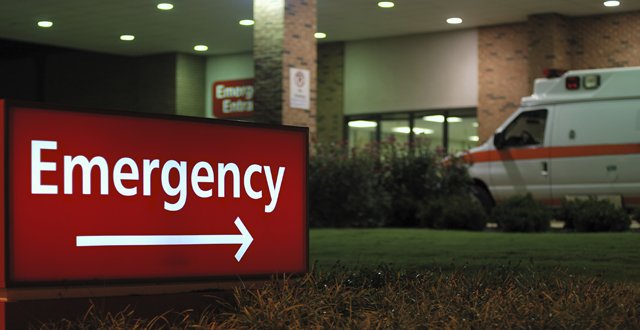Receiving a diagnosis as serious as cancer is never easy. However, ensuring the environment is appropriate for the diagnosis to be made and delivered is important for patients in order to start coming to terms with their condition and be properly informed about their future treatment plan.
One does not need to be a healthcare expert to know that a busy emergency department (ED) is not the ideal place to make such a sensitive diagnosis. This especially applies in the Irish health service, which has suffered from chronic ED overcrowding for more than a decade.
Another key point is that when cancer patients present at an ED, the cancer is invariably at an advanced stage. Therefore, the research into the subject conducted by the Irish Cancer Society and National Cancer Registry Ireland into cancers diagnosed as emergencies in Ireland each year, which was recently published, shines a spotlight on a neglected corner of the health service that is seldom discussed.
<h3 class=”subheadMIstyles”>Main findings</h3>
According to the report, which examined patterns of emergency presentation of cancer in Ireland from 2002 to 2015, approximately 3,000 of the 22,000 invasive cancers diagnosed each year are diagnosed as emergencies. The figure does not include non-melanoma skin cancer. Overall, during 2010-2015, some 14 per cent of cancer cases presented as emergencies at the time of diagnosis. The report also compares Irish figures with those of the UK. It shows 16 per cent of all invasive cancers presented to EDs in the UK between 2006 and 2015. In Ireland, of the 24 individual cancer types examined, those with the highest proportion of emergency presentation during 2010-2015 were pancreatic; brain/central nervous system and liver cancers (all 34 per cent); leukaemia (27 per cent); ovarian (24 per cent); colon (22 per cent); and stomach cancers (21 per cent).
<h3 class=”subheadMIstyles”>Demographics</h3>
For cancers presenting as emergencies, 30 per cent were in patients from the most deprived population quintile, compared with only 23 per cent for cancers presenting electively. According to the authors, cancer patients from the most deprived areas are 50 per cent more likely to be diagnosed via emergency presentation than those from the most affluent areas. There was also significant variation in relation to age. For cancers as a whole, 56 per cent of cases were diagnosed at ages 65 and over. However, for cancers presenting in EDs, 71 per cent were in patients aged over 65, compared with only 53 per cent for cancers presenting electively.
Expressed in a different way, cancer patients aged over 65 were twice as likely to present as emergencies (18 per cent) as patients under 65 (9 per cent). Age-related variation in emergency presentation likelihood was most marked for thyroid cancer (patients aged over 65 were 10 times more likely to present emergently than patients under 65) and least marked for multiple myeloma (no difference by age). Leukaemia was the only cancer group for which older patients were less likely to present in EDs.
<h3 class=”subheadMIstyles”>Late presentation</h3>
One of the most concerning issues outlined in the report is that cancers presenting in EDs are invariably at a late stage. For cancers as a whole, about 58 per cent of known-stage cases were diagnosed at early stages (I or II), 42 per cent at later stages (III or IV). However, for cancers presenting in EDs, about 77 per cent were diagnosed at later stages, compared with only 38 per cent for cancers presenting electively. Stage-related variation in emergency presentation risk was most marked for breast cancer (late-stage cases 14 times more likely to present in ED than early-stage cases, adjusted for age) and least marked for pancreatic cancer (late-stage cases 1.3 times more likely to present in ED).
<h3 class=”subheadMIstyles”>Positives</h3>
There are some positives to take from the report. Over the period 2002 to 2015, the overall proportion of cancers presenting emergently fell from 20 per cent to 14 per cent, the biggest decline occurring between 2005 (19 per cent) and 2009 (14 per cent), with little change subsequently. Of 24 cancer types examined, nine (colon, rectal, liver, pancreatic, breast, prostate, kidney, thyroid cancers and multiple myeloma) showed trends of significant decline in the proportion of cases presenting emergently over the whole period (2002-2015).
Only cancers of the brain/central nervous system showed any significant recent increase in emergency presentations (2009-2015, following a significant decline during 2005-2009, respectively).
<h3 class=”subheadMIstyles”>Recommendations</h3>
The <em>National Cancer Strategy 2017-2026</em> aims to reduce the proportion of cancers diagnosed in EDs by 50 per cent by 2026. In order to support this aim, and to achieve further reductions in emergency presentations, the document makes a number of recommendations for diagnoses to be made at an earlier stage. Chief among these is to allow GPs to have direct access to diagnostics at secondary care level. An Irish Cancer Society-commissioned report from 2016, <em>Access to Diagnostics Used to Detect Cancer</em>, highlighted that there were long delays for GPs accessing diagnostic tests for a suspected cancer; a lack of access to direct diagnostic tests; lack of community diagnostics; and a lack of access to rapid investigative tests for suspected cancer. Often, because of these problems, GPs are forced to send a patient directly to ED to access urgent diagnostic tests. The report also calls for the development of diagnostics in primary and community care settings and targeted public awareness campaigns on the signs and symptoms of cancer.
It also says that the development of a rapid-access pathway to treatment is necessary for people diagnosed in an ED, as is a significant incident case review for these patients. The report calls for further research to better understand the causes of emergency presentation.
<h3 class=”subheadMIstyles”>Reaction</h3>
Speaking at the launch of the report, Director of the HSE National Cancer Control Programme (NCCP) Dr Jerome Coffey said the recommendations echo those contained in the national cancer strategy.
“I will commit to continuing the conversation between the [National] Cancer Control Programme and the [Irish] Cancer Society on sequencing and implementing these recommendations,” said Dr Coffey.
“If you look at the headline news, the headline news is that there has been progress. In 2005, presentations were at 20 per cent; by 2015, it was 14 per cent. We want to get down to 7 per cent. We want to get down from eight presentations to emergency departments per day, down to four in the lifetime of the strategy. That is doable; it is not too ambitious, it is appropriately ambitious.”
Dr Coffey said it is important to consider the biology of different cancers when it comes to emergency presentations.
“Cancers are different,” he said. “There is consistency in the numbers between this jurisdiction and our neighbours across the water. “So pancreatic cancer at early stage will present with obstructive jaundice or back pain. It is aggressive biologically. That does not mean the person has metastatic disease. It just means that this is a unique cancer. So some of the issues we are dealing with here are international issues.”
Dr Coffey said there is a need to consider regional factors.
“We need to take populations, go deeper into the data and look at the geography,” he stated.
“Which parts of the country are seeing more emergency presentations? Where are we seeing all the lung cancer presentations? We need to support GPs even more. We have had guideline referrals on our website for a number of years, we have electronic referrals, that is all done, so when we come back and look at this data again in a couple of years, we want to make sure there is a full impact from the work that has been done and the work that has only started this year.”
He said the funding released as part of the cancer strategy will support the implementation of the recommendations.
Dr Coffey concluded by saying the report is the most valuable public health initiative he has seen for some time.
“This fits with the cancer strategy, it fits with Sláintecare, it fits with other countries who may have started this project,” noted Dr Coffey.
“So it is great to have national data on an international issue. A lot of projects I get involved in, the first thing that’s asked is, ‘where is the data?’ Here, we are starting with the data, that is a huge step forward; it is a huge competitive advantage.”
Also speaking at the launch, Director of the National Cancer Registry Ireland Prof Kerri Clough-Gorr said the report was an example of what can be achieved through collaboration.
“What I want to focus on is partnership,” said Prof Clough-Gorr. “We can do more when we do partnerships like this. We are delighted to be involved in this type of research because it brings all of us forward. We are delighted to work with the National Cancer Control Programme, because with our funding from the Department of Health, together we can do a lot more for patients.
“We are all chasing the same goal here. We all want the best possible cancer patient experience. And when we come together for reports like this, we are able to see where more work needs to go, where policy needs to be focused. We can work with the National Cancer Control Programme to get at those targets. Our data is the basis of all that… when we do it together, we do it much better.”













Leave a Reply
You must be logged in to post a comment.